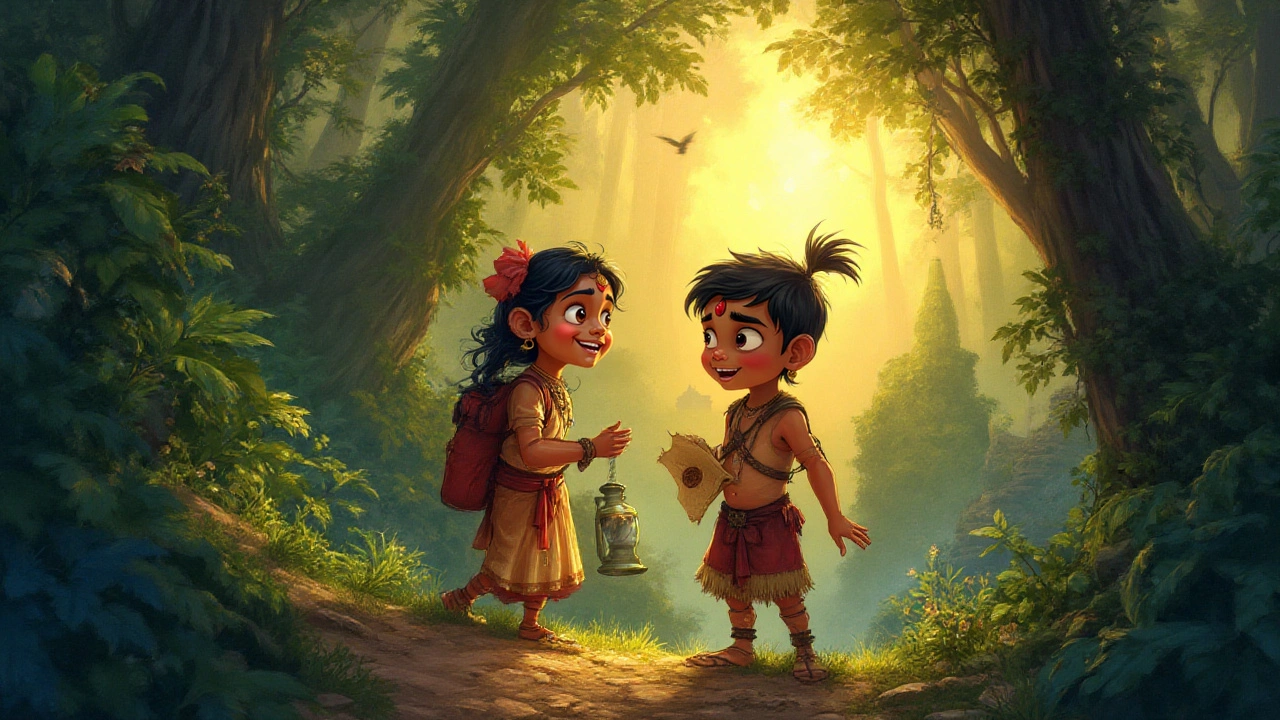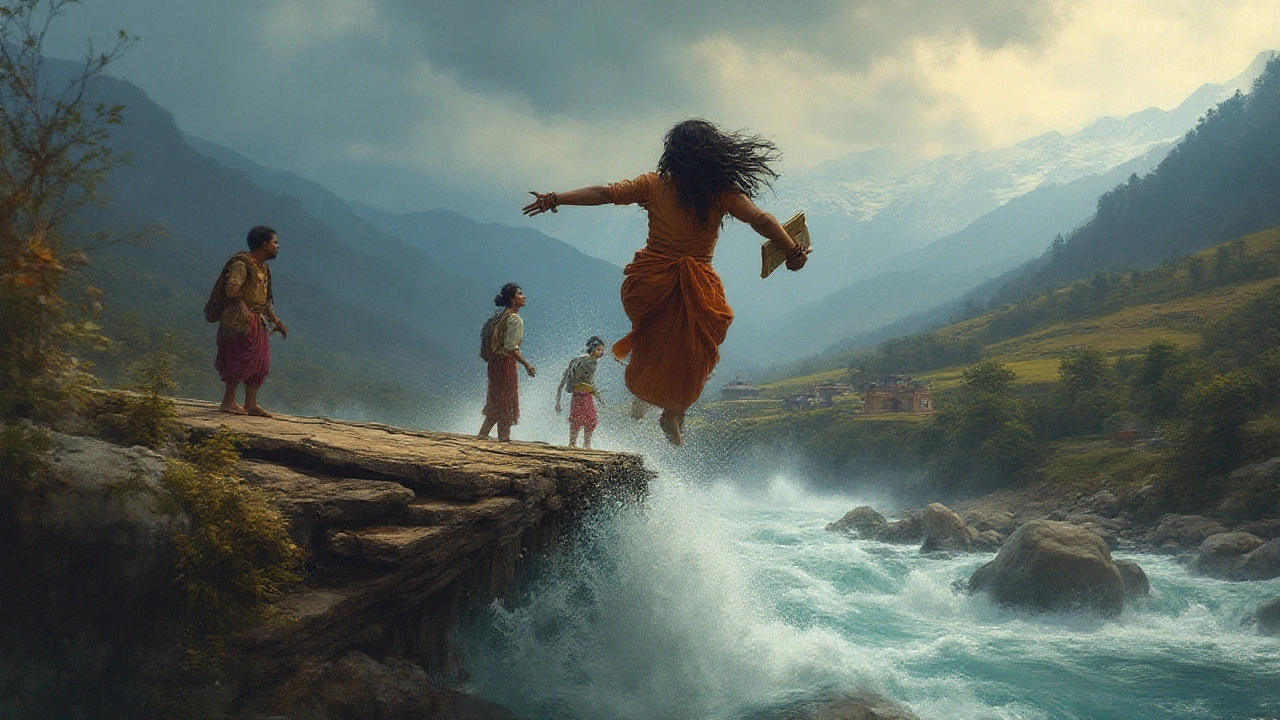Adventure Short Story: Definition, Characteristics, and Writing Tips
 Aug, 2 2025
Aug, 2 2025
If you think adventure is dead in the world of fiction, just look at the explosion of short, heart-pounding stories being passed around these days. There’s something about a single, compact tale of danger or discovery that never fails to grab people—maybe it’s that classic itch for a shot of adrenaline, the kind that crackles in your brain when you picture lost cities, stormy seas, or a character on the run. People have always loved these stories. They’re practically hardwired to respond to peril and escape—a leftover from when our ancestors actually dodged danger every day. But what exactly turns a story into an adventure short story? Is it just wild action, or is there something deeper going on under all that excitement?
What Makes a Story an Adventure Short Story?
An adventure short story is never just about wild chases, dark jungles, or ancient treasures. Sure, those things help, but at its core, this kind of story centers around a character thrown into unfamiliar territory, forced to react, adapt, or survive. The stakes? Sky-high. The sense of urgency? That beats strong through every line. Think of Jack London’s "To Build a Fire" or the more recent "The Most Dangerous Game" by Richard Connell. Both stories bring readers along for a ride where every choice can mean life or death.
At its heart, an adventure short story is tight. These aren’t sweeping sagas—most clock in at just a few thousand words. But that brevity is part of the magic. Every sentence counts. There’s no room for long backstories or endless inner monologues. Instead, the action kicks off fast. Even if you’re reading about pirates or deep-space explorers, you don’t wade through pages of setup. You’re dropped into the moment—the storm’s already crashing, the villain is only a step away, the character’s breath quickens, and you’re sharing it all.
But it’s not just urgency. The best adventure stories tap something primal. They let the reader experience danger from the safety of a cozy chair. Stanford neurologists say your brain actually produces a small hit of adrenaline when you read about a character in peril, which keeps you turning pages—even if you’re a thousand miles from danger yourself. Not every story needs explosions or razor-edge cliffs; sometimes, a city chase, a locked room, or a journey through a blizzard is enough. What pulls it together is the constant question: will the character get through this alive, changed, or broken?
Here’s a quick breakdown of crucial features:
- Immediate stakes: If nothing big is changing, it’s not an adventure. The character risks something—life, freedom, a loved one, or their old self.
- Fast pace: These stories move! Tons of adventure stories start "in medias res"—right in the thick of things.
- Vivid setting: Whether it’s a jungle, a labyrinth, or a city’s shadowy corners, the world feels alive and unpredictable.
- Clear obstacles: Problems keep coming. Each twist forces the characters to act, improvise, or escape.
- Short form, big impact: In just a few pages, you get a full spectrum of threat, risk, and transformation.
With all that packed in, it’s no wonder the adventure short story has stayed popular from the heyday of pulp magazines to today’s bite-sized digital fiction.
Roots and Evolution of the Adventure Short Story
Adventure stories are as old as storytelling itself. Before Netflix, before even the first novels, people around campfires spun short, punchy tales of heroes and dangers—think of The Odyssey’s quick anecdotes, or Norse sagas carried along by bare-bones survival feats. The first adventure novels came later, but the short story form always stuck around, partly because it did something novels couldn’t: deliver a focused jolt of excitement with nowhere to hide and no slack to lose you in.
The genre really took off in Victorian times, especially when explorers like Richard Burton or Mary Kingsley brought back tales from far-off lands. Adventure magazines in the late 1800s and early 1900s crammed their pages with condensed narratives—perfect for train rides or busy city readers. By the 1920s, the "pulp" era hit: magazines like Adventure, Argosy, and Weird Tales published tens of thousands of stories, many of them under 5,000 words, from names you’d probably still recognize. What made these stories stay fresh was their quick turnover—writers often had to bang out a gripping piece in a weekend, so every word had to count.
The form changed with time, of course. More recent adventure stories have moved away from just brawny explorers facing wild animals. Today, you’re just as likely to find high schoolers escaping cyber attacks, or astronauts dealing with disasters off Earth. Even the locations have shifted: urban jungles, caffeine-fueled cityscapes, and digital spaces can be every bit as dangerous and challenging as tropical islands or icy mountains. What hasn’t changed is that sense of immediacy. Readers want to be right there, feeling every heartbeat. And that’s not going to change any time soon.
One interesting fact: before movies, adventure short stories often got adapted for radio serials. People would huddle around their radios, picturing daring escapes in their heads. Some of the best-loved film series of the 20th century—from Indiana Jones to The Mummy—owe their DNA to those quick-paced, punchy stories. And now, streaming services are bringing short stories back, with platforms looking for fast, sharp narratives to adapt. If you write adventure shorts, Hollywood is once again looking your way.
Worth noting: even the big names started with shorts. Ray Bradbury, Jack London, and Robert Louis Stevenson all wrote some of their punchiest work in short-story form. That’s why so many writers use the adventure short story as their playground—a safe spot to try risky ideas and see if a wild character or shocking twist works before stretching it out into something longer.

Key Ingredients of an Unforgettable Adventure Short Story
Want to try your hand at writing one? Let’s look at the building blocks. Throwing a hero into the jungle or a haunted subway tunnel isn’t enough. An unforgettable adventure short story needs friction, stakes, and a whiplash-fast rhythm. Plot is king—and usually queen, too. Unlike longer tales, there’s little time to dilly-dally with exposition. Characters must leap into action early. In a recent study, bestselling adventure authors pointed out that the first moment of danger should land in the opening paragraph or two. Anything slower risks losing the reader’s focus.
But don’t ignore the world you’re building. Even in a handful of pages, great stories make their setting pulse. Think of Richard Connell’s "The Most Dangerous Game." In just a few lines, a misty island takes on a life of its own, full of traps and secrets. Or Shirley Jackson’s "The Lottery," where an ordinary town twists into something terrifying. Paint with bold colors, high contrast, and don’t be afraid of throwing unusual elements into your scene, like a boat stranded in the desert or a secret passage behind a laundromat.
Your protagonist doesn’t have to be an action star. Ordinary people make the best adventurers because every risk feels bigger. Give your character a clear want—escape, revenge, redemption—and then slam obstacle after obstacle in their way. The story should be a series of choices: Will they try the crumbling rope bridge or risk the waterfall? Each decision feels urgent, and the consequences have to sting.
Dialogue matters, too. Keep it snappy, real, and reveal character intentions through what they say—and especially what they don’t. And don’t forget about that twist: the best short stories leave you stunned or reeling on the last line. Maybe what felt like a rescue turns out to be a trap, or a villain proves to be the character’s only hope. If you can make a reader say, “No way!” at the end, you’ve nailed it.
Some practical tips from working writers who constantly churn out strong adventure shorts:
- Start with trouble on the first page—no slow windups.
- Let your characters fail as well as succeed. Struggling makes them human.
- Use all the senses. Is the air thick, is the boat rocking, is there a bad smell? Tiny details make the world live in the reader’s mind.
- Every word must work. Short stories are like poetry with a sword in hand—cut anything that doesn’t build tension, setting, or motive.
- Test your ending: does it offer closure, surprise, or a punch in the gut?
Pick up anthologies or zines—read all the short adventure stories you can. Some writers keep a "danger notebook"—any wild idea or near-miss in real life, they jot it down for possible stories later. Drawing inspiration from weird news, travel mishaps, or legends is fair game.
Famous Examples and Why They Work
We can talk about theory all day, but the best way to get a sense for adventure short stories is to crack open a few that have stood the test of time. Consider Jack London’s "To Build a Fire." No lost pyramids, no guns—just one man, a brutal winter, and nature itself as the enemy. It’s short, but the stakes—life and death, moment by moment—are clear on every page. Readers feel the cold in their own bones, and every mistake is costly. That’s pure adventure, no fluff.
Or look at "The Most Dangerous Game." Here, a twist turns the hunter into prey. A supposedly safe landing on an island becomes a savage game for survival. Connell’s story hit like a shockwave when it came out in 1924, and it’s still read in schools and used as a pattern for modern thrillers. The villain is charismatic, the setting is lush and menacing, and the pacing? Relentless.
Fast-forward to more recent times, and you’ll find Andy Weir’s short story "The Egg"—while not classic adventure, it shares the tight pacing and shifting stakes of its ancestors. Or Nnedi Okorafor’s "Who Fears Death," which began as a powerful shorter tale before turning into a full novel. These stories show that adventure can happen anywhere: another planet, inside a mind, or in a mundane city transformed by danger.
Many successful short stories started as simple “What if?” questions: What if a storm maroons someone with an enemy? What if technology starts working against its user? The genre thrives on these sparks. It’s about surprise, risk, and transformation—and how, in just a few pages, the whole world can turn upside down. If you’re hungry to try, start with a moment of danger and see where it takes you. The rest of us? We’ll keep reading, chasing that next jolt of inky adrenaline.